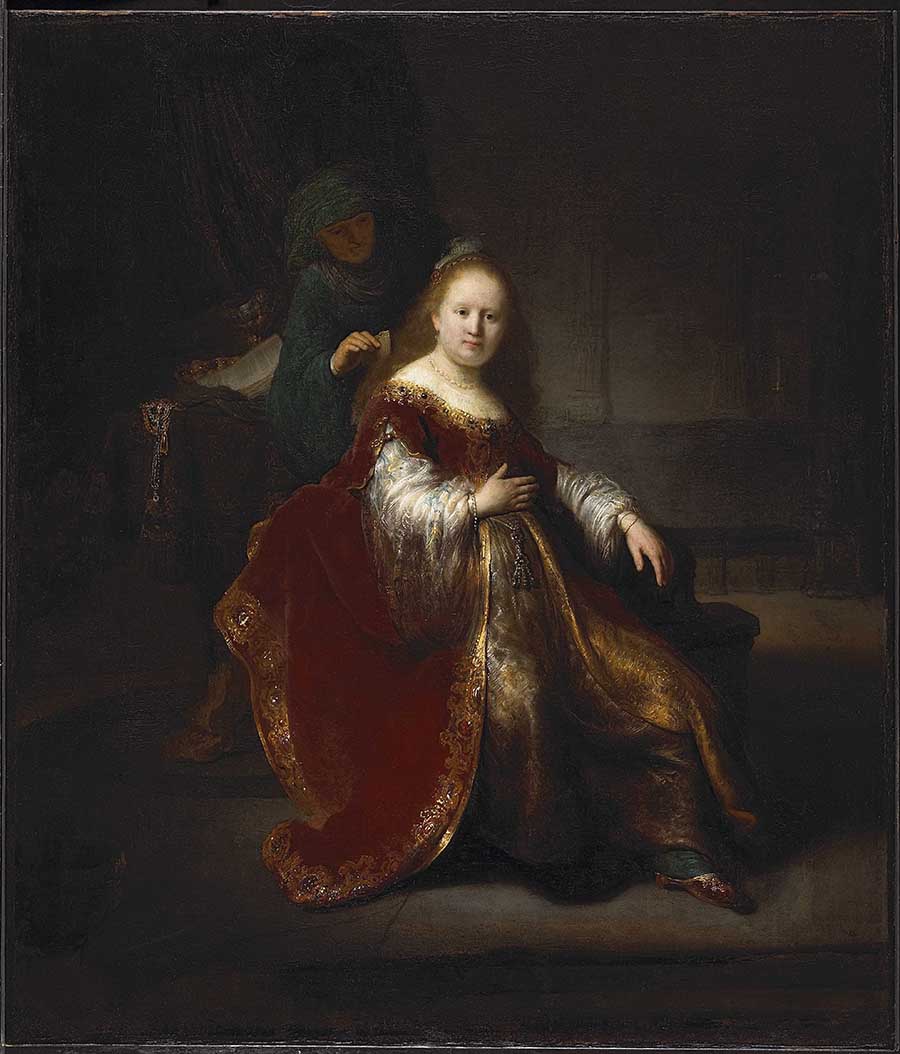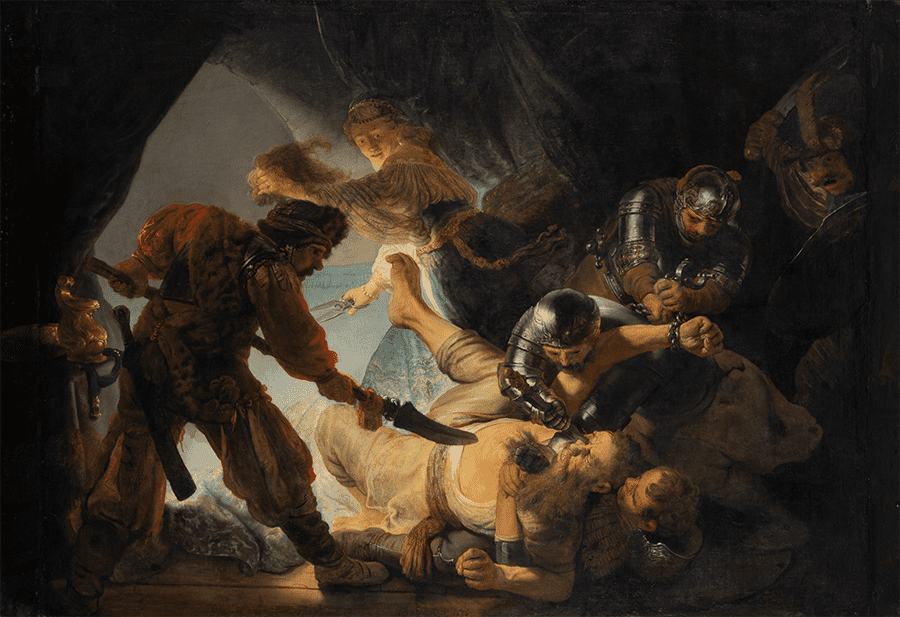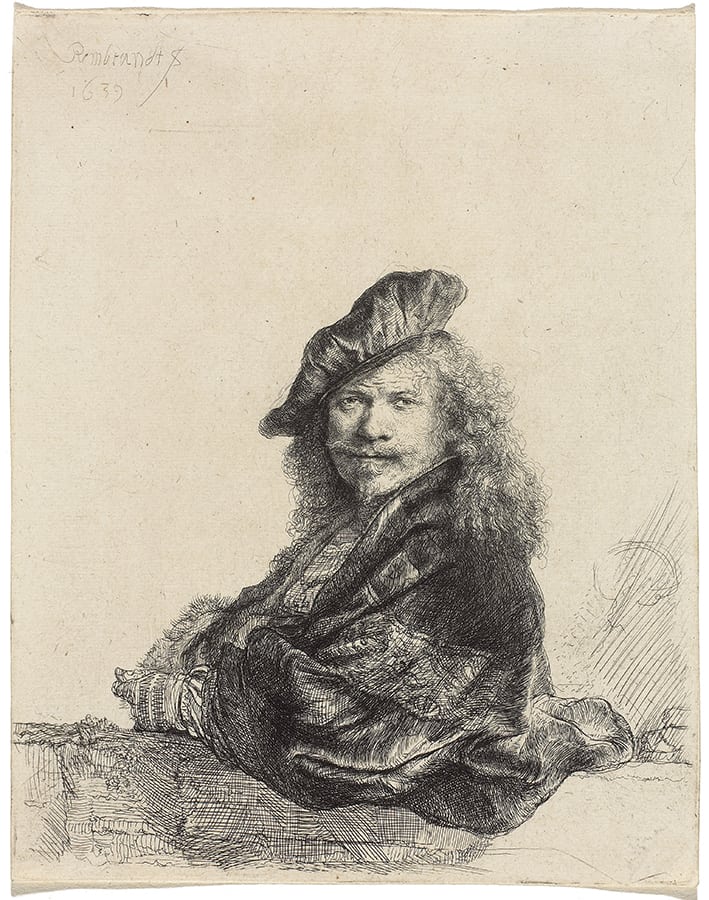By Paul Gessell

National Gallery of Canada, Ottawa |Photo: NGC
National Gallery presents compelling new look at an old master
The mysterious, plump, young woman at the National Gallery of Canada has confounded art historians for centuries. Who is she meant to represent? Who was the model? Why is she dressed in such finery?
Rembrandt painted the ambiguous picture in the period 1632-1633. As with many of his paintings, he liked to keep people guessing by leaving out details that would identify the subject. Centuries later, Rembrandt still has us guessing.
Who’s That Girl?
The mysterious woman, known today only as Heroine from the Old Testament, is one of the leading ladies in the exhibition, Rembrandt in Amsterdam: Creativity and Competition, at the National Gallery from May 14 to Sept. 6. The show includes more than 100 paintings and works on paper by Rembrandt, his contemporaries and his followers.
An entire room in the exhibition is devoted to Heroine, which up until a few years ago was called A Woman at Her Toilet. Speculation continues nonetheless: Is she Saskia (Rembrandt’s wife), Lisbeth (his sister) or a biblical figure such as Esther or Bathsheba? Might she be just a fantasy figure? The space for Heroine includes images of other “similarly mysterious” women, notes Stephanie Dickey, the Kingston-based co-curator of the exhibition.
“There’s something intriguing about the ambiguity of these figures,” says Dickey. “Rembrandt is really inviting the viewer to bring his own imagination to the painting.”
Heroine was supposed to be featured in a National Gallery exhibition in the summer of 2020 that was to reunite about 100 paintings still owned, or previously owned, by the Prince of Liechtenstein. (The National Gallery purchased Heroine from the Prince in 1953).
Early in 2020, though, the gallery cancelled the exhibition citing the Prince’s use of Jewish slave labour at his Austrian farms during the Second World War. Since this was public knowledge when the National Gallery started planning the
exhibition, the cancellation shocked many in the art world.

One could argue that Rembrandt’s success as an artist during the so-called Dutch Golden Age was also partially bankrolled through slave labour. Many Dutch entrepreneurs during the 17th century grew rich enough to buy expensive paintings, in part, because of their investments in overseas endeavours involving slave labour and the exploitation of Indigenous people.
So why is the gallery showing Heroine this summer when it didn’t last summer? “The exhibition opening on May 14 will allow the gallery’s experts and scholars to put into context this work of art,” says a statement from the gallery.
“We are contextualizing the exhibition by bringing a plurality of voices, to look at the artworks not only through the lens of the Netherlands in the 1600s, but also in dialogue with contemporary artists and the issues of our time.”
Those “voices” will include presentations by two racialized historians and two installations created by Black, contemporary artists.
Rembrandt in Amsterdam is the first major international exhibition to focus on the artist’s middle years, roughly from his mid-20s to mid-40s, and the first major Rembrandt exhibition ever at National Gallery, says Dickey, an art historian at Queen’s University.
As a young man, Rembrandt gradually moved his operations from
his hometown of Leiden to Amsterdam, where he found his greatest success—at least until his 1656 bankruptcy, when he faced fierce competition from other artists. Rembrandt’s finances were also a disaster, in part, because he was a notorious overspending shopaholic and made bad investments.
“The goal of the exhibition is to knock him off his pedestal a little bit and show there were a lot of other talents around him and, in fact, my view is he became the artist he became because of all these stimulating persons around him.”
In the long run, Rembrandt triumphed over his contemporaries. He died in 1669, at age 54, although in some ways he seems immortal because of his talent and clever marketing: He created many “selfies,” using his own face to portray various stock characters and placing himself as a bystander in historical or biblical scenes, including the crucifixion. Today, we would call that advertising.

Rembrandt van Rijn | Self- portrait Leaning on a Stone Sill, 1639 etching on laid paper | 20.6 × 16.3 cm | National Gallery of Canada, Ottawa Purchased 1951 (5830) | Photo: NGC
Shopping and Selfies
“A lot of his contemporaries were talented but they were doing what the market wanted,” says Dickey. “They were giving patrons what they asked for. Rembrandt was very independent. He was innovative. He was not afraid to experiment.”
Among the paintings in the exhibition, Dickey is especially excited about The Blinding of Samson, 1636 – “one of the greatest Rembrandt paintings of all time.” The Blinding is owned by the Stadel Museum in Frankfurt, which has jointly organized the Rembrandt show with the National Gallery. Ottawa is lucky. The Frankfurt museum has never before loaned the painting to a North American art museum.
The large canvas—2.3 metres by 3.1 metres—is dramatic and gory. The biblical scene shows a man thrusting a spike into Samson’s eye. Blood spurts. Nearby, the villainous Delilah ghoulishly holds a pair of scissors and a clump of hair she has cut from Samson’s head to rob him of his super-strength.
Another favourite painting of Dickey’s in the show is a bucolic country scene, Landscape with a Stone Bridge, 1637, loaned by the Rijksmuseum in The Netherlands.
“There’s these brooding clouds in the sky and a kind of glimmering light,” says Dickey. “You feel there’s something dramatic about to happen.”
The exhibition includes more than two dozen Rembrandt paintings and several dozen prints. To many fans, Rembrandt is most beloved for his portraits of prominent citizens of Amsterdam. “You see beyond the surface of the person,” says Dickey. “You get a sense of personality. You get a sense of inner life.”
So, what do you see in Heroine from the Old Testament? Her smile is as inscrutable as that of the Mona Lisa. What is this woman’s personality? What is her inner life? Rembrandt’s deliberate ambiguity in the painting allows every visitor to the National Gallery to answer those questions as he or she sees fit.
